2026 Fuel Market Outlook: What it Means for Your Transportation Budget
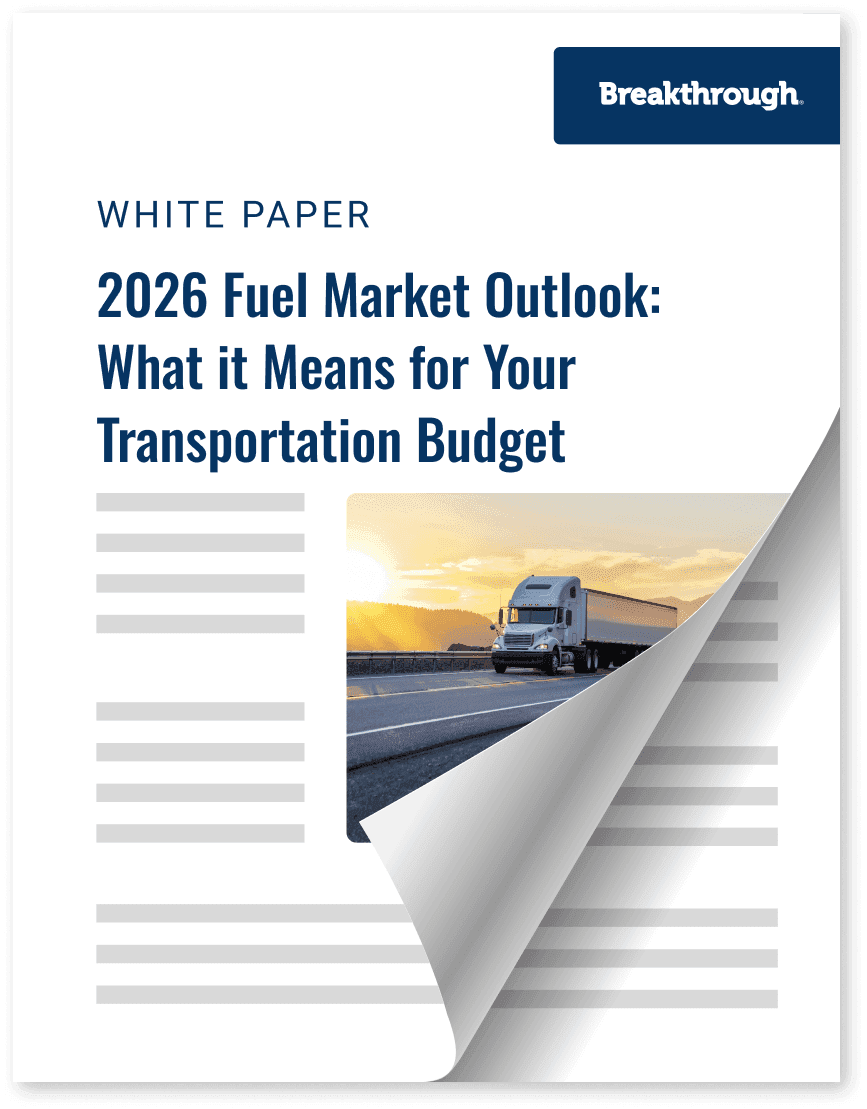
Trending
Top Posts
Best-in-class shippers are setting the standard on transportation emissions intensity and miles driven with SmartWay carriers by industry. Powered by dynamic, shipper-transacted data, Breakthrough's sustainability indices let you measure your network’s performance—guiding smarter decisions for a sustainable future.
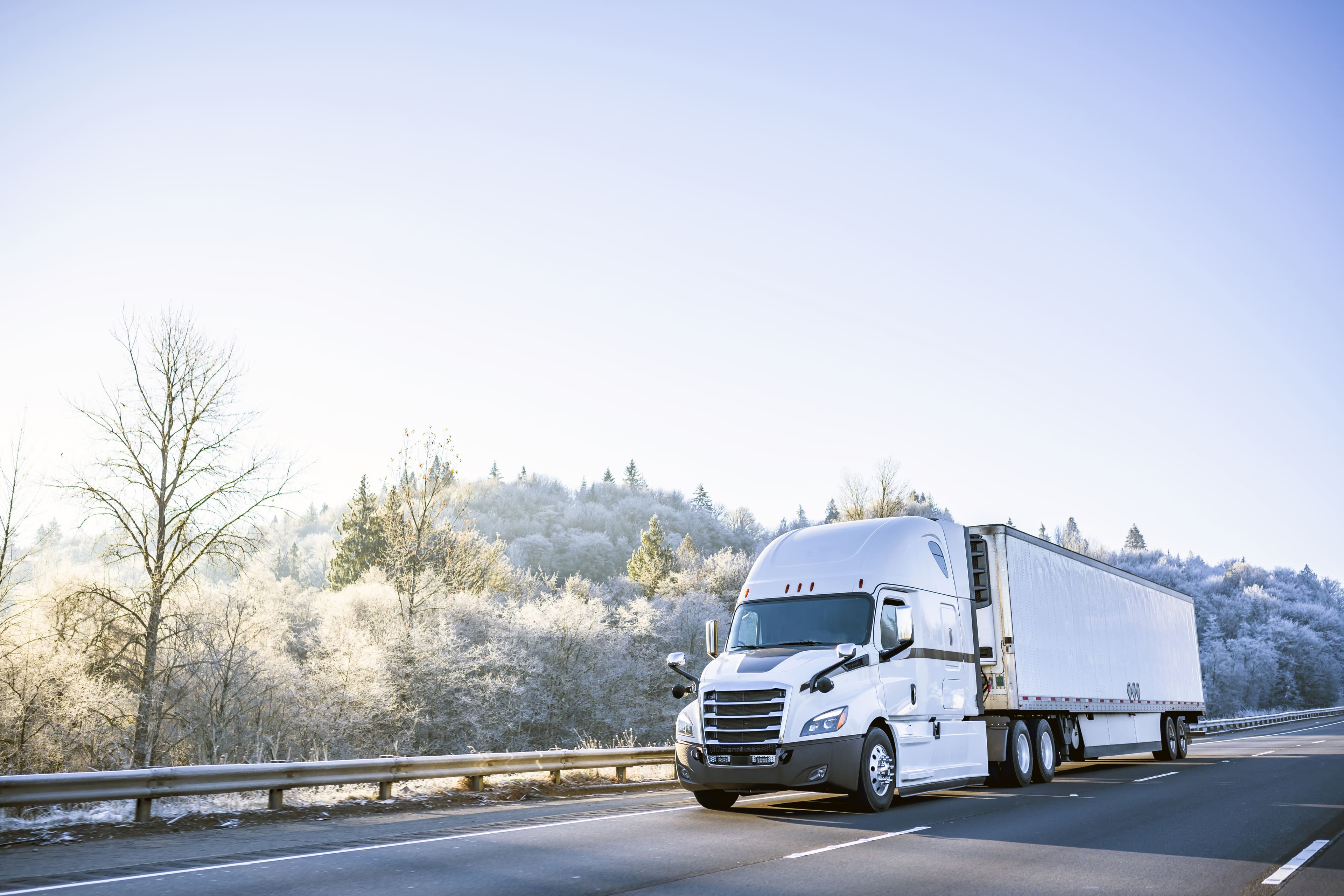
Transportation sustainability indices serve as essential tools for measuring and benchmarking environmental performance. They highlight critical data points that guide progress toward science based targets, helping companies uncover areas for improvement. These transportation indices also provide a solid framework for tracking advancements and effectively communicating results to stakeholders.
Tracks sustainability progress across modes, helping identify which modes are most efficient and where improvements are needed.
Highlights emissions reduction efforts across industries, offering insights into how sectors are advancing toward sustainability goals.
Measures industry adoption of efficient carriers, showcasing progress in reducing environmental impact through smarter logistics choices.
Emissions intensity measures the volume of lifecycle emissions produced against a measure of business output, in this case, measuring emissions produced by moving one ton of goods one mile. This data provides valuable insights into the progress and effectiveness of sustainability initiatives by mode.
Rail is the most efficient mode of land transportation, offering the lowest emissions intensity. Truckload has remained steady while LTL (less-than-truckload) movements continue to fluctuate. For shippers aiming to reduce their network’s carbon footprint, transitioning OTR (over-the-road) shipments to intermodal and consolidating smaller LTL shipments into full truckloads are practical and impactful strategies.
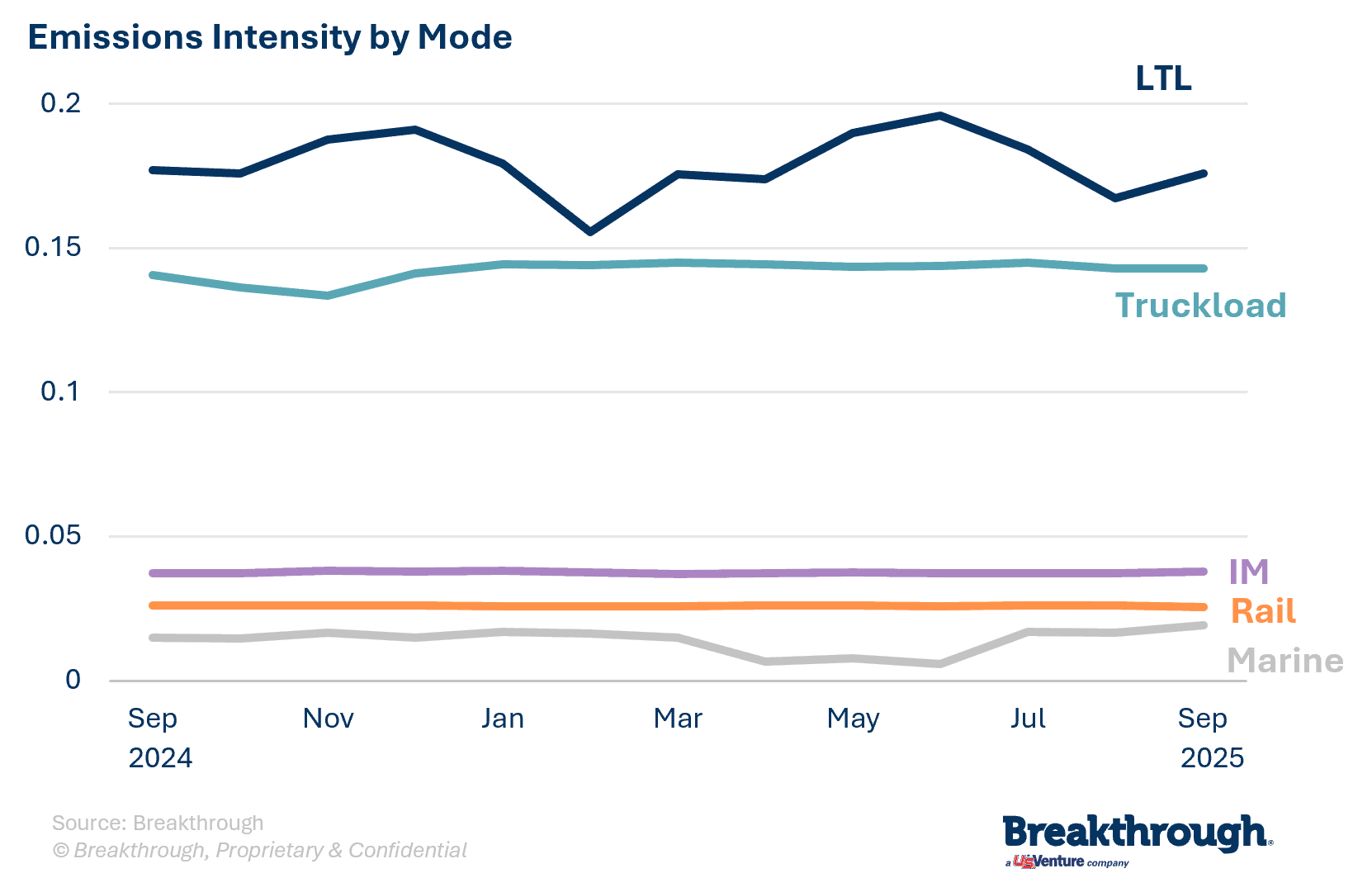
Emissions intensity measures the volume of lifecycle emissions produced against a measure of business output, in this case, measuring emissions produced by moving one ton of goods one mile. This data provides valuable insights into the progress and effectiveness of sustainability initiatives by industry.
Durable Goods and Paper & Packaging shippers continue to have the highest emissions intensity, followed by Food & Beverage, Retail, and Chemicals. Month over month, Chemicals had the largest drop in emissions intensity. Consumer Packaged Goods has the lowest emissions intensity. Emissions intensity is influenced by several factors, including transportation mode, energy and equipment type, load weight, and carrier efficiency.
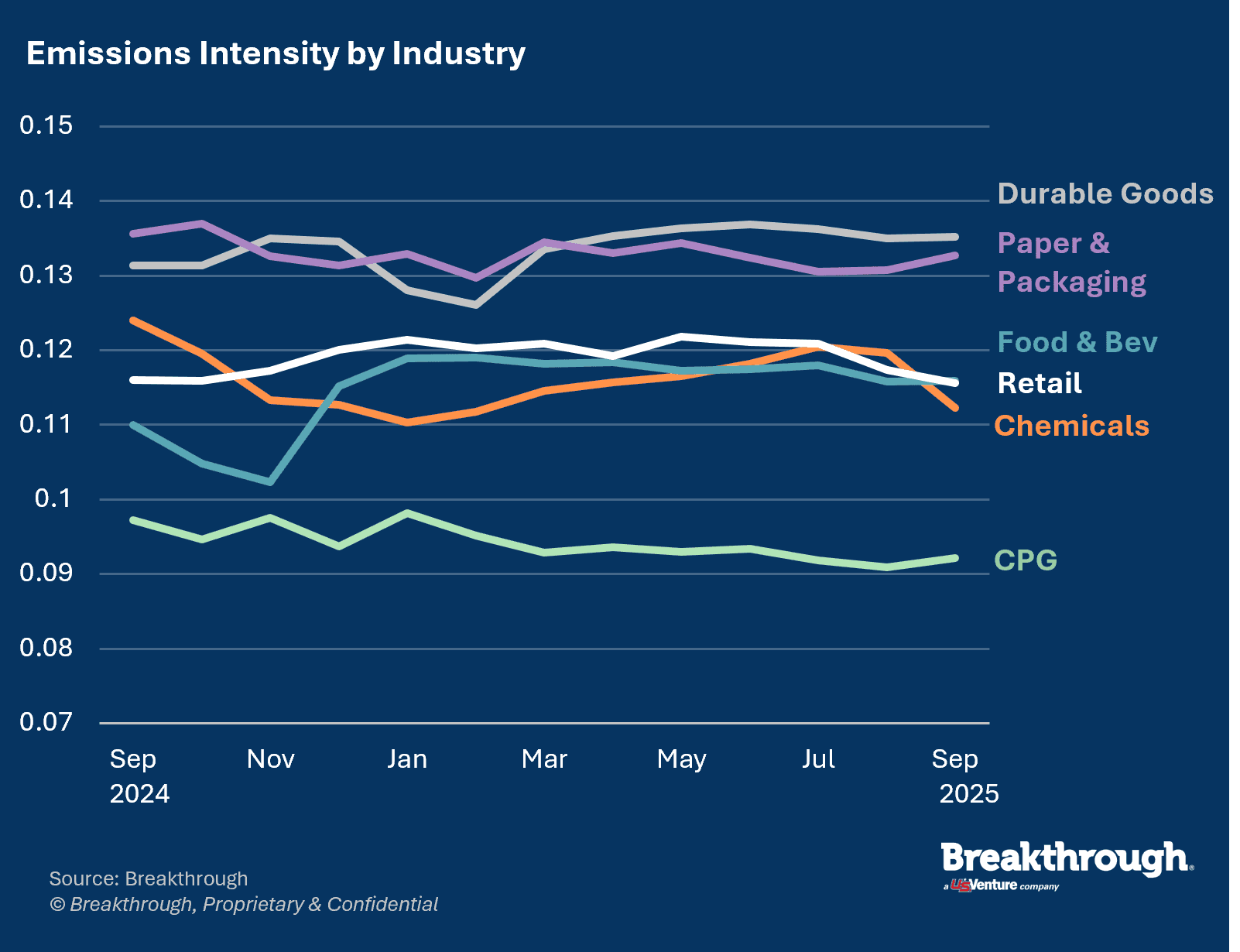
The Environmental Protection Agency’s (EPA) SmartWay program measures, benchmarks, and tracks a carrier’s efficiency and fuel economy to provide a score that reflects the carrier’s environmental impact. This data offers valuable insights into how each industry is increasing its adoption of carriers participating in the SmartWay program.
Chemicals and Food & Beverage shippers have embraced SmartWay carriers, with an adoption rate of 84%respectively. In contrast, Consumer Packaged Goods shippers show the lowest adoption rate at just 60%. Carriers are encouraged to join the SmartWay program to obtain a precise score that reflects their environmental performance, enhancing their appeal to shippers seeking efficient, sustainable transportation partners. Similarly, shippers should prioritize collaborating with SmartWay carriers to support those investing in cleaner fleets, contributing to progress toward science-based sustainability targets.
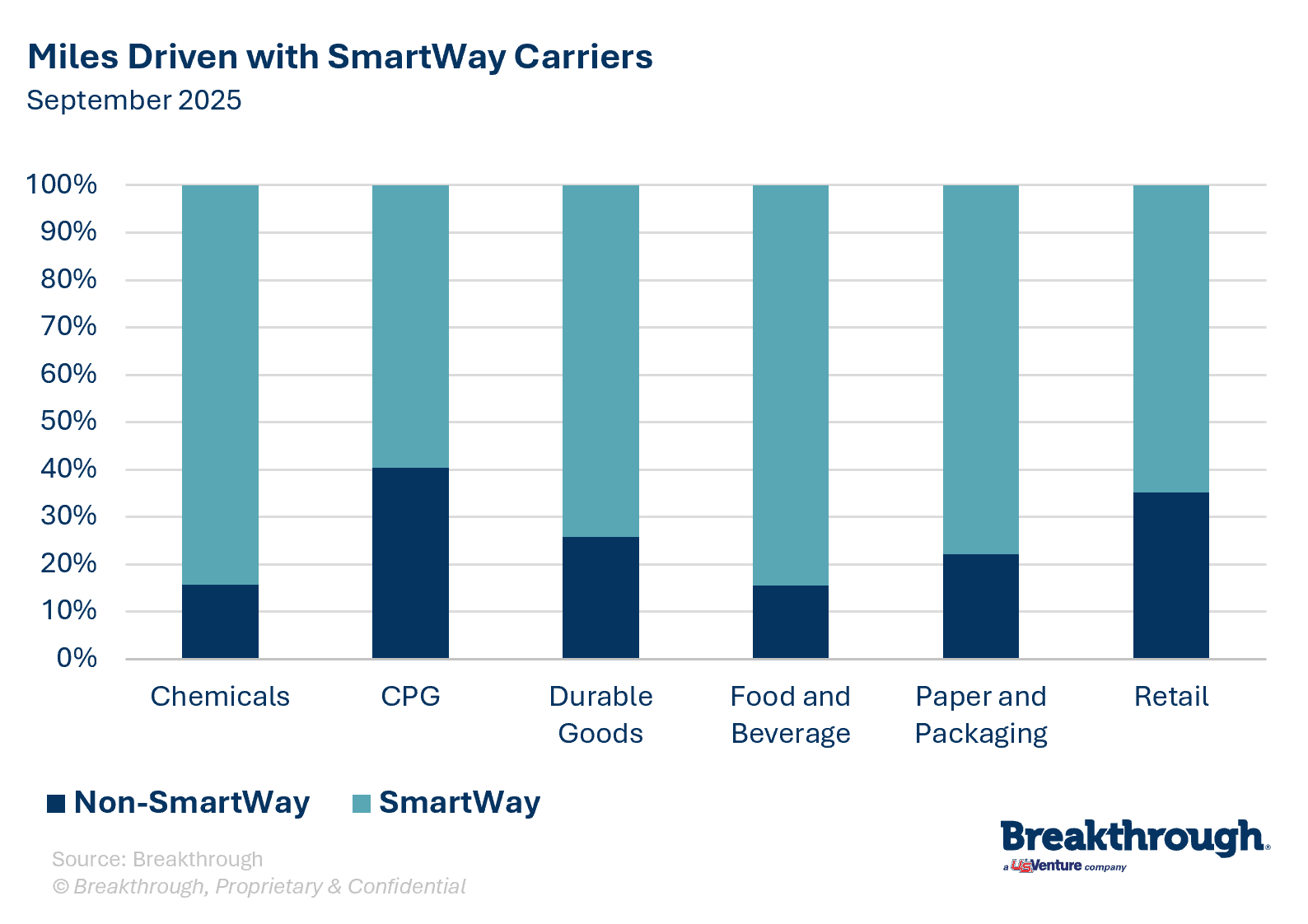


Although the federal government has pivoted away from emissions reduction and sustainability, the 45Z Clean Fuel Production Tax Credit will likely bolster alternative energy production. Moving forward, states will likely serve as the primary accelerators of emissions reduction efforts. Notably, New Mexico will be the newest state to implement a clean fuel standard, with its Clean Transportation Fuel Program set to go into effect no later than July 1, 2026. This will create new market opportunities for alternative energy.
Aside from regulatory requirements, economic, geographic, and infrastructure factors will influence the adoption of alternative energies. Notably, natural gas, especially renewable natural gas (RNG), is receiving greater attention because it is not as geographically constrained or limited by infrastructure development relative to other alternative energies. Renewable diesel and heavy-duty electric vehicles are gaining traction as well. The momentum behind alternative energy continues to gain ground as businesses realize the benefits of fuel diversification, cost stability, and emissions reduction.
The Breakthrough ecosystem is one of the cleanest and most robust sets of transportation data in the U.S.


Our insights have empowered shippers to streamline operations, lower costs, and work toward achieving ambitious science-based targets. Shippers using CleanMile achieve an average 6% reduction in emissions intensity (kgCO2E/ton-mile) during their first year.
Take the next step in your sustainability journey. Assess your network data in relation to industry benchmarks.